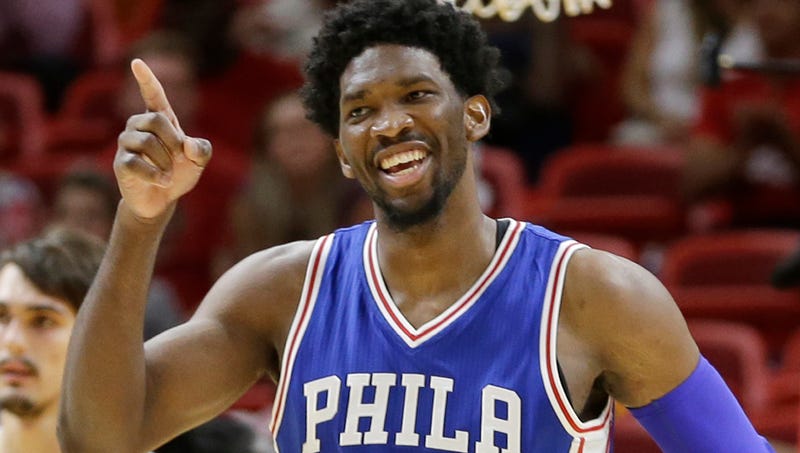The Best College Basketball Alumni Teams

Earlier this week, University of Kentucky coach John Calipari said in a Bleacher Report interview that if an NBA team could afford an all-ex-Kentucky roster, they could win an NBA title (he's probably right). So which other college programs have produced at least a starting five that could compete at the NBA level?
Link to Bleacher Report's Calipari article: http://bleacherreport.com/articles/2691798-john-calipari-on-coaching-extreme-talent-one-and-dones-and-his-all-nba-team
In no particular order, the top five starting fives:
Kentucky
Mostly one-and-dones, Calipari has brought in and produced a plethora of NBA stars since taking over as Kentucky's head coach. So many that Calipari himself said that an all-Kentucky alumni team in the NBA would be impossible due to the salaries. However, he did say that hypothetically, his starting five would be John Wall, Devin Booker, Anthony Davis, Karl-Anthony Towns, and Demarcus Cousins. Not to mention the talent and depth they would have off the bench.
Even a more "budget-friendly" team could trot out a lineup of Wall, Brandon Knight, Kidd-Gilchrist, Davis, and Enes Kanter. A lineup that is both affordable, and would easily hold its own against the rest of the NBA.
The Wildcats alums would be so loaded that guys like Eric Bledsoe, Rajon Rondo, Julius Randle, and Terrence Jones wouldn't even crack the starting lineup, or see much time at all.
Heck, just the guys from Wall and Cousins' one year could beat most NBA teams, with Bledsoe, Patrick Patterson, and Deandre Liggins joining the two All-Stars.
UCLA
The Bruins have been a bit underwhelming in terms of success at the college level in recent history, but their alums have had no shortage of success in their professional careers.
The UCLA alumni starting five would likely consist of Russell Westbrook, Zach LaVine, Aaron Afflalo, Trevor Ariza, and Kevin Love. A lineup that would fit right in with the modern NBA's pace a space concept.
The bench would not have the depth of Kentucky, but a backup backcourt of Darren Collison and Jrue Holliday is pretty darn good.
Texas
Possibly even more underwhelming than UCLA given the NBA talent they have produced, the Longhorns are probably the "darkhorse" of this list due to their much lower profile in the college basketball scene.
Cory Joseph, Avery Bradley, Kevin Durant, LaMarcus Aldridge, and Myles Turner make up a very formidable starting five, and probably the best defensive unit on this list.
The Kentucky team might be deeper and have more offensive firepower, but the Longhorn alumni starting five could give the Wildcat five a run for their money, and would definitely be worth the price of entry.
Marquette
The Golden Eagles only have five players total in the NBA, but if you're a fan of yet-to-make-his-debut-rookie Henry Ellenson, this is the team for you.
Joining Ellenson are Dwyane Wade, Wesley Matthews, Jimmy Butler, and Jae Crowder, one helluva small-ball lineup. Or, if you really want to space the floor, Steve Novak is really the only other big guy at your disposal. Or you could go REALLY small, play Crowder at center, and pick up the top D-League prospect, Vander Blue (also part of the all-name team).
Connecticut
Unfortunately, the man formerly known as Jesus Shuttlesworth (Ray Allen), finally announced his retirement earlier this year, making his alma mater's squad searching for a wing player to fill out their starting five.
Even without Ray-Ray, the Huskies could trot out NCAA-Championship duo Kemba Walker and Shabazz Napier in what might be the smallest backcourt ever. Along with Jeremy Lamb, Rudy Gay, and Andre Drummond. If you really hate the small guards, A. You aren't a true UConn fan, and B. Hasheem Thabeet is NOT in the league anymore.
Honorable Mention
Duke: The Blue Devils have no shortage of NBA players (second only to Kentucky), but their theoretical starting five has some "big" holes, literally speaking. Kyrie Irving, JJ Reddick, and Jabari Parker are a really solid 1-3, but then you're left deciding between Jahlil Okafor and the three Plumlee brothers to fill out your lineup.
Georgia Tech: Iman Shumpert, Anthony Morrow, Thadeus Young, Derrick Favors, Chris Bosh (another darkhorse?).
Kansas: If Embiid had played more than 31 games in his career, the Jayhawks would make the list no doubt, or, if they had ANY point guards in the NBA (really too bad the Mario Chalmers Lebron James reunion didn't happen). Joining the Process would be the Morris twins, Andrew Wiggins, and...Paul Pierce at point guard?
North Carolina: Much like their in-state rival, the Tar Heels have a vast number of NBA players, but despite having the best player of all time as an alum, Carolina lacks the elite level players needed to make this list. Raymond Felton, Danny Green, Vince Carter, Harrison Barnes, and John Henson would be the likely starting five.
Ohio State: Mike Conley, D'Angelo Russell, Evan Turner, Jared Sullinger, Kosta Koufos. Despite having the NBA's highest paid player, you can't help but say "eh" when you see this lineup.
Syracuse: This team would have possibly the worst ball movement of all time. Michael Carter-Williams, Dion Waiters, Wesley Johnson, Jerami Grant, and Carmelo Anthony (yes, Melo at center).





